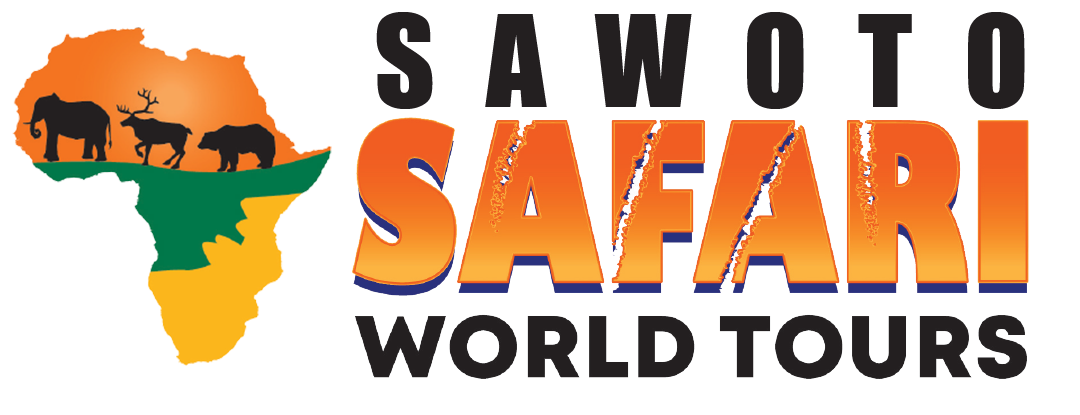Do not hesitate to give us a call. We team is here to talk to you.
+264 81 8211 521
info@safariworldtours.com
Introduction
The diverse 14-day guided Namibia Lodge Safari is the perfect alternative in this mesmerizing land of extremes. Namibia is an ideal destination for travelers in search of rugged natural beauty, dream-like scenery, and incredible wildlife, complemented with warm hospitality, unique cultures, and good food. Experiencing the vast spaces, wildness, and solitude of Namibia you are constantly reminded of the magnitude of nature and the elements.
• Upon Booking a 10% non-refundable Deposit is required to Confirm booking of Tour/Activity/
Accommodation or Car Rental.
• Remaining 90% should be paid not later than 30 Days Prior to Departure.
• If tour is within 40 days or less prior to booking full payment is required.
• Your deposit can either be made through a Bank Transfer, Online Debit or Credit Card Payment.
Pick up from the airport. Drive through Windhoek to Arebbusch Travel Lodge. A township tour and dinner will be arranged. We can recommend Joe’s Beer House, Cape Town Fish Market or The Stellenbosch.
Included activities
City tours
Overnight: Arebbusch Travel Lodge
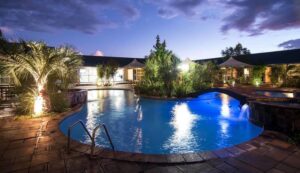
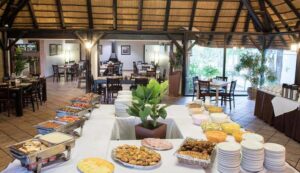
Day two starts with a delicious breakfast in the guesthouse’s sunny breakfast room and a short tour briefing. Take in the solitude and changing colors of the Kalahari and endless views over the desert landscape a fascinating glimpse into the remarkable fauna and flora that survive and thrive in these harsh desert conditions.
Included activities
Guided Bush walks
Optional activities
Harnas cheetah feeding
Overnight: Harnas Wildlife Foundation
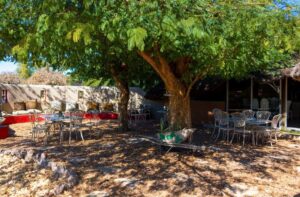
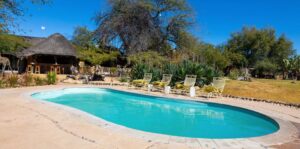
You will get morning Breakfast and depart to Mariental which is located close to magnificent the Hardap Dam, which is the largest reservoir in Namibia. The Hardap Irrigation Scheme has breathed life into this arid terrain, which is now fertile with farmlands covered in citrus, melons, lucerne, wine, and maize, and dotted with ostrich farms.
Included activities
Sunset Nature Drive
Optional activities
guided walk to a community of bushmen where you can learn about tracking and craft making
Overnight: Bagatelle Kalahari Game Ranch
Have breakfast and a full day to continue with the activities.
Optional activities
Morning scenic drives, afternoon sundowner trips, an early walk with the San, birdwatching, night drives and a leisurely horseback safari.
Overnight: Bagatelle Kalahari Game Ranch
The guest will depart to Fish River Canyon and stay 2 nights where they will be camping. The Fish River Canyon with its beautiful sunsets and spectacular landscapes.
Included activity
Nature game drive
Overnight: Canyon Roadhouse
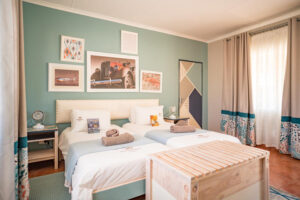
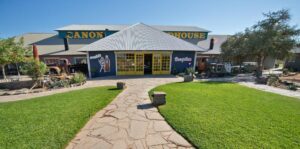
You will have breakfast and a full day to continue with the activities
Included activities
Fish River Canyon Viewpoint
Optional activities
Fish River Hiking Trail, scenic chartered flights, horse riding,
Overnight: Canyon Roadhouse
From Fish River Canyon you will drive to the small town of Aus. Close by to your lodge are the wild horses the area is famous for explore Lüderitz and enjoy a tour around the old mining town of Kolmanskop. This is a great area for photography the houses are the last remaining memory of ‘Millionaires Avenue’ which is now derelict and filled with sand.
Included activities
scenic drive,
Optional activities
Hiking, Mountain biking
Overnight: Klein-Aus Vista Desert Horse Inn
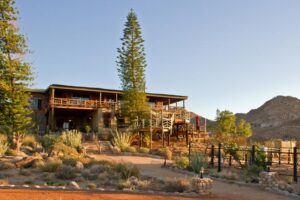

Today after breakfast, you’ll go see the iconic red dunes of Sossusvlei. In the afternoon you will reach your lodge, where you will have to enjoy your dinner.
Included activities
Enjoy the sundowner dune drive
Overnight: Namib Desert Lodge
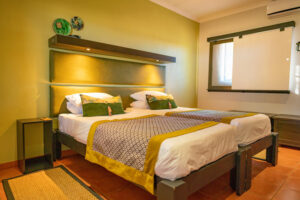
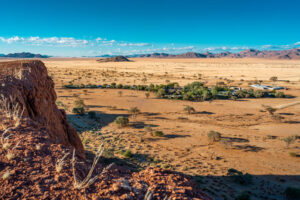
Guest will wake up and have breakfast before going into the park for Sossuvlei Excursion which includes Dune 45, Deadvlei, Hiddenvlei, and Big Daddy. The tour guide will have regular stops to let clients take pictures and have some exposure of the Dunes.
Included activities
Sossusvlei Excursion ( Deadvlei, Big Daddy, Dune 45)
Overnight: Namib Desert Lodge
This morning we leave Sossusvlei and make our way to the cooler coastal town of Swakopmund by the Atlantic Ocean. This town resembles a small German town with its architectural buildings, palm-lined streets, seaside promenades, restaurants, cafes, art galleries and museums. We spend the next 2 nights in Swakopmund enjoying the various different activities on offer.
Activities Included
2-Hour Quad Biking, Sand-Boarding, sightseeing & Township tour
Optional activities
Living Dunes Experience from Swakopmund; Scenic Desert Tour, Sky diving,
set horse riding and paragliding
Overnight: Hotel Pension A La Mer
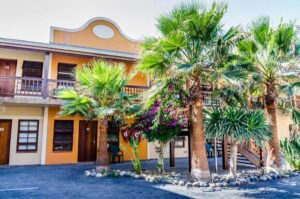
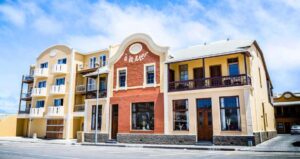
Our next stop is the Brandberg where you stay the night, next to the dry Ugab River, home to the rare desert elephants. We explore the mountains on foot with our local guides, who lead us through this region adorned with rock art.
Included activities
Visit the white lady painting, unique bushman painting
Overnight: Brandberg White Lady Lodge
You will depart to Etosha National Park and stay 2 nights. The park’s main characteristic is a salt pan so large it can be seen from space. Yet there is abundant wildlife that congregates around the waterholes, giving you almost guaranteed game sightings. At the same time, Etosha National Park is one of the most accessible game reserves in Namibia and Southern Africa, the concentration of big games around the waterholes makes game viewing incredibly rewarding. You might not even have to leave your rest camp to see lions, elephants, rhino and any number of antelope and zebra quenching their thirst
Included activities
Game drive
Overnight: Etosha Safari Camp
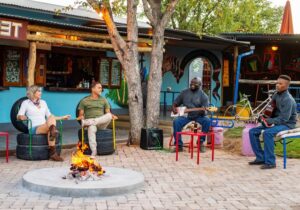
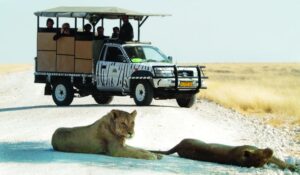
Clients have breakfast, today will be a full day of safari game viewing allowing plenty of opportunities for good sightings and spectacular photographs. After breakfast at the lodge, we go out on our morning game drive.
Included activities
Full day game drive
Overnight: Etosha Safari Camp
You will have breakfast and depart back to Windhoek
The name Windhoek is derived from the Afrikaans meaning „windy corner“. The former spelling at the beginning of the German colonial time “Windhuk” is not in use anymore. The San (Bushmen) already populated the area around Windhoek thousands of years ago.
The Alte Feste is the oldest surviving building in the city which subsequently developed around it. After the World War I German surrender in South West Africa, Windhoek was occupied by the South African Army in March 1915. The Alte Feste now served as military headquarters for the South African Union troops.
Windhoek is one of the world’s major centres for the karakul sheep-skin trade. Windhoek has two traditional names: Otjomuise and /Ae //Gams. Windhoek’s name may be derived from the word “Winterhoek”, the the name of the mountains surrounding Tulbagh in South Africa. Windhoek was formally established on 18 October 1890.
Spanning over several countries, the Kalahari Desert offers safari experiences unlike any others in Africa. Each region provides a unique experience with excellent sightings of antelope species, big cats and incredible birdlife that have adapted to survive the harsh conditions.
A Kalahari Desert holiday, however, offers travellers something completely unique. Stunning landscapes of red sand dunes, which can turn green during the summer months, fascinating plant life and wildlife and an insight into the lives of the San/Bushmen awaits those who choose to journey into the Kalahari.
The Kalahari Desert is a vast semi-arid savannah in Southern Africa and covers approximately 900,000 square kilometres of land. The desert comprises a series of diverse landscapes that are not confined to one country but stretch across South Africa, Botswana and Namibia.
The Kalahari Desert is inhabited primarily by Bantu speakers and Khoisan-speaking San, with a small number of Europeans.
Although all San traditionally were hunter-gatherers, there were significant cultural and social differences between groups. For example, a number of groups had long-standing clientships with Bantu-speaking stockowners, while other groups lived—until the 1970s—solely as autonomous foragers.
The northern Kalahari supports a considerable population of giraffes, zebras, elephants, buffalo, and antelopes (roan, sable, tsessebe, and impala); predators such as lions, cheetahs, leopards, wild hunting dogs, and foxes; other large and medium-sized mammals, such as jackals, hyenas, warthogs, baboons, badgers,
Mariental is the administrative capital of the Hardap Region in an area which has long been a centre for the Nama people. It lies near the Hardap Dam, the second largest reservoir in Namibia.
Mariental is a town located in the Hardap region of Namibia, in the central part of the country. It is the capital of the region and is known for its agricultural industry, including cattle ranching and grain farming. Mariental is located in a semi-arid region, but has a relatively mild climate due to its elevation.
Named by local Rhenish (German Lutheran) missionaries, the town was founded in 1912 as a railway stop between Windhoek and Keetmanshoop and named after Maria, the wife of the first colonial settler of the area, Hermann Brandt. It is home to the oldest Dutch Reformed church congregation in Namibia, founded in 1898.
Named by local Rhenish (German Lutheran) missionaries, Mariental was founded in 1912 as a railway stop between Windhoek and Keetmanshoop. It was proclaimed a town in 1920 and a municipality in 1946. An important economic function of the town is the processing and transport of Karakul skins.
Mariental is a town of 10,000 inhabitants in south-central Namibia, lying on the B1 national road 232 kilometres (144 mi) north of Keetmanshoop and 274 kilometres (170 mi) southeast of Windhoek. It lies at an elevation of 1,090 metres (3,580 ft).
The Fish River Canyon in Namibia is one of the largest canyons in Africa and in the world. The Fish River carved the canyon out of rock over millions of years. The Fish River Canyon is 1,000 to 2,300 feet (300 to 700 meters) deep and about 100 miles (160 kilometers) long.
The beginnings of the canyon started about 500 million years ago when a fracture of the earth’s crust resulted in the collapse of the valley bottom forming a broad valley running north–south. Southward-moving glaciers deepened it, with more faults and erosion adding to the effect.
The Fish River Canyon, Africa’s answer to the Grand Canyon, is one of the best places in Namibia to stand in awe of the raw majesty of nature. Measuring 27km/17mi wide, 550m/1804ft deep, and 160km/99mi long, it’s the largest canyon on the continent and Namibia’s greatest geological wonder.
It features a gigantic ravine, in total about 100 miles (160 km) long, up to 27 km wide and in places almost 550 meters deep. The Fish River is the longest interior river in Namibia. It cuts deep into the plateau which is today dry, stony and sparsely covered with hardy drought-resistant plants.
Mostly the activity done there is hiking exploring the Canyon with your feet.
Fish River Canyon Trail
Aus is a small village situated in the Karas region of Namibia. This village is most notable for its unpredictable weather and its history as a Prisoner of War camp. When the German colonial troops surrendered to the South African forces in 1915, a camp for the prisoners of war was set up a few kilometres outside of Aus.
Aus’s weather can be extreme, very cold in winter and hot in the summer. It is also unpredictable – which stems from its proximity to the Cape.
Aus offers many interesting activities and attractions. There is something to do for every member of the family. This includes a new museum, which should encourage more visitors to stop and discover something about an area that is all too often ignored. At the entrance to this village is a modern Information Centre and is one of the few information centres in Namibia that opens at weekends, and is well worth a visit you can also visit the observation shelter to spot the Feral Horses at Garub lastly enjoy Hiking and Biking.
Sossusvlei (sometimes written Sossus Vlei) is a salt and clay pan surrounded by high red dunes, located in the southern part of the Namib Desert, in the Namib-Naukluft National Park of Namibia.
Sossusvlei has a hot desert climate. The annual mean average temperature is 24 °C. In winter, the nighttime lows are around 10 °C, while in summer temperatures often reaches up to 40 °C.
These dunes are among the highest in the world; many of them higher than 200 metres, the highest being the one nicknamed Big Daddy, about 325 metres high. The highest dune in the Namib Desert however, Dune 7, is about 388 metres high.
Dune 45 at 170 meters tall is the most well-known dune chosen to climb by those who visit the Sossusvlei area. This relatively ‘easy’ climb takes anywhere from 40 minutes to one hour to reach the top, for most people. Coming down takes less than 5 minutes.
The sand dunes in the Sossusvlei area are known as ‘star dunes’ due to the shape formed when the wind approaches from all directions. As a result, the dunes hardly move. 8. The sand in the region is given its distinctive red colour from the layer of iron oxide which coats it.
It’s a beautiful beach town with a strong German influence, architecturally and culturally. The local people are very friendly and helpful. It’s also a tourist town with lots of locally crafted sculptures available to tourists.
Walvis Bay (meaning “whale bay”) seems larger and more spaced out than Swakopmund
The Brandberg Massif or Brandberg Intrusion is a granitic intrusion, which forms a dome-shaped massif. It originated during the Early Cretaceous rifting that led to the opening of the South Atlantic Ocean.
It has an exceptionally rich palaeo-archaeological heritage with a high concentration of prehistoric rock art (more than 43 000 paintings and 900 sites alone). The two genres of rock art (engravings and paintings) are found in close association in the Brandberg and more than 120 archaeological sites have been recorded.
Over 120 million years ago, a single mass of granite punched through the Earth’s crust and intruded into the heart of the Namib Desert in what is now northern Namibia. Today the mountain of rock called the Brandberg Massif towers over the arid desert below.
The formation is a remnant of a long period of tumultuous volcanic and geologic activity on Earth during which the southern super-continent of Gondwana was splitting apart. The mountain influences the local climate, drawing more rain to its flanks than the desert below receives.
Etosha means the”great white area” and refers to the huge salt pan. This is an impressive sight because it’s certainly the biggest salt pan in Africa. Subsequently, when it rains, the water pools in the pan attracts hundreds of thousands of flamingos!
The abundance of game in Etosha National Park is somewhat unexpected, showcasing some of the most common and rarest wildlife species. The areas with thicker vegetation are home to elephant (some of the largest in Africa due to the vitamins and nutrients found in the ground), the endangered black rhino and even leopard.
Mopane is the most common tree, estimated to make up around 80% of all trees in the park. The sandveld in the north-eastern corner of Etosha is dominated by acacia and Terminalia trees. Tamboti trees characterize the woodlands south of the sandveld.
The 4730 km2 Etosha Pan is a huge, pristine oval-shaped salt pan situated in northern Namibia. It is the central feature of Namibia’s Etosha National Park. It is the terminal playa of the Cuvelai drainage system in the lowest part of the Ovambo Basin at an elevation between 1,071 to 1,086 m above sea level.
The Etosha Pan, of Course, Abundant Bird and Animal Life, Wide Open Spaces, Stunning Sunsets, Numerous Waterholes, Plenty of Dining Options and warm Namibian Hospitality.
The park has about 114 mammal species, 340 bird species, 110 reptile species, 16 amphibian species and 1 species of fish (up to 49 species of fish during floods). Etosha National Park is also the single-most important custodian of the black rhino in the world.
